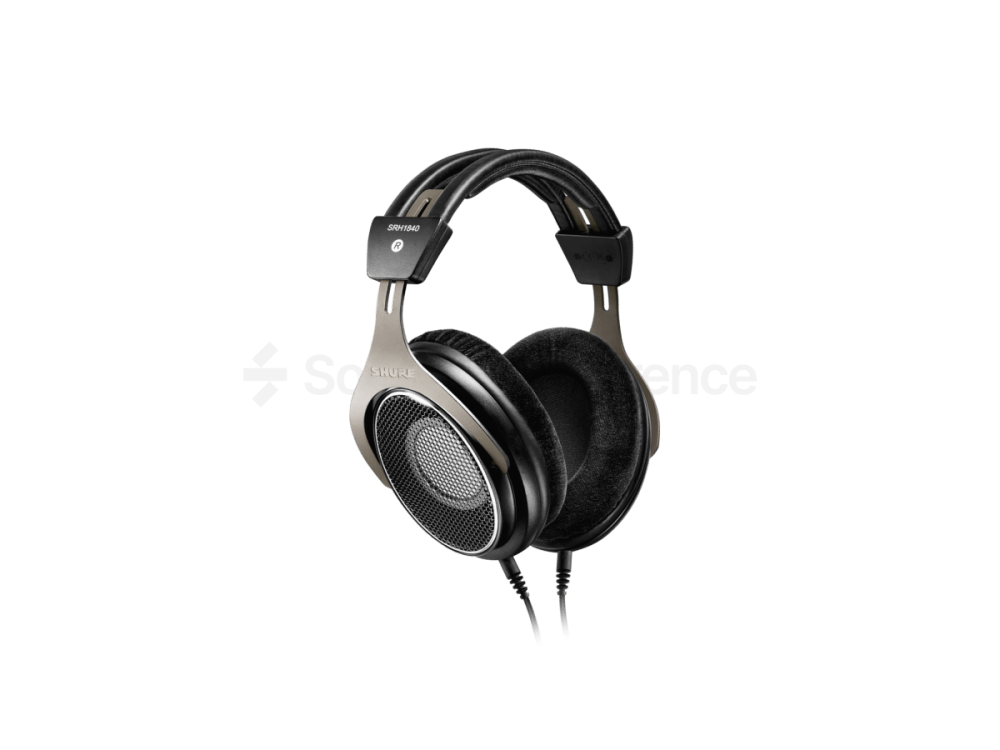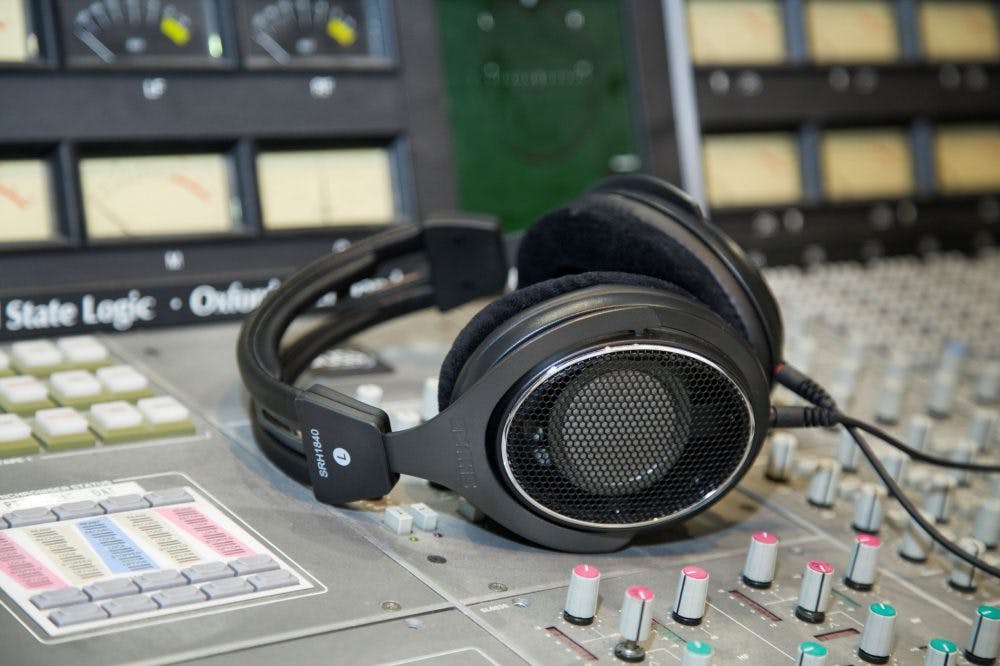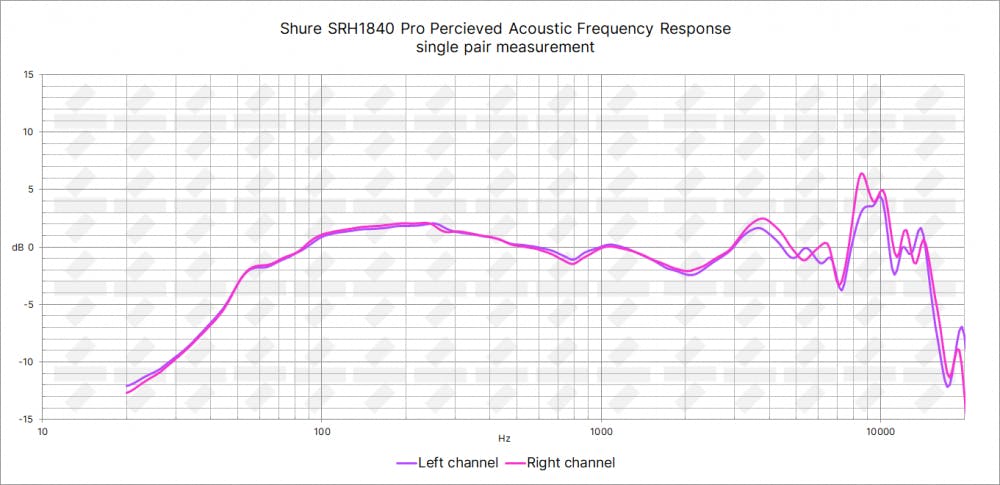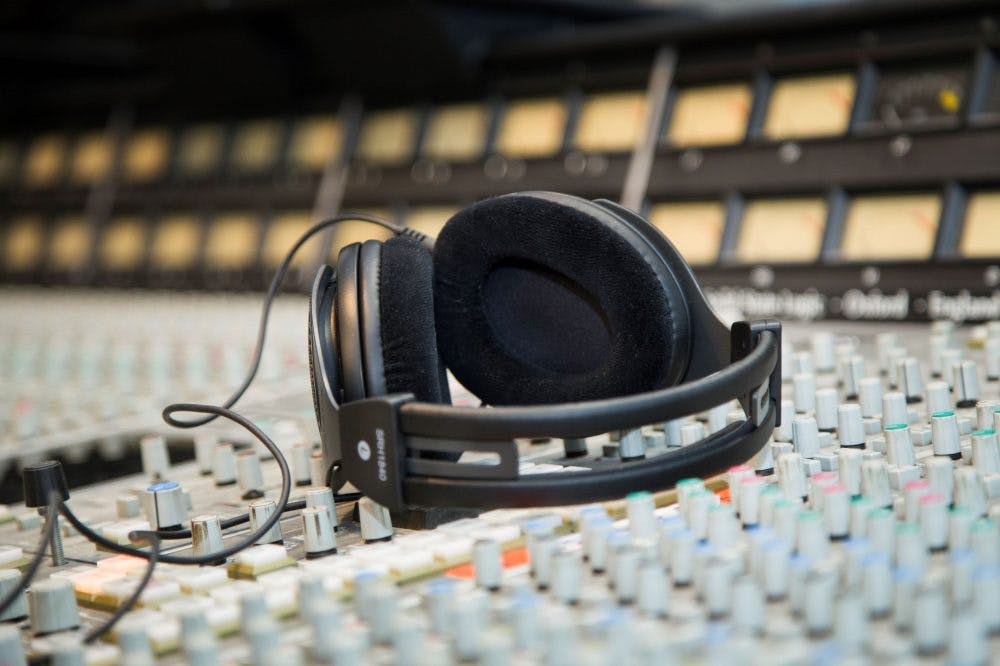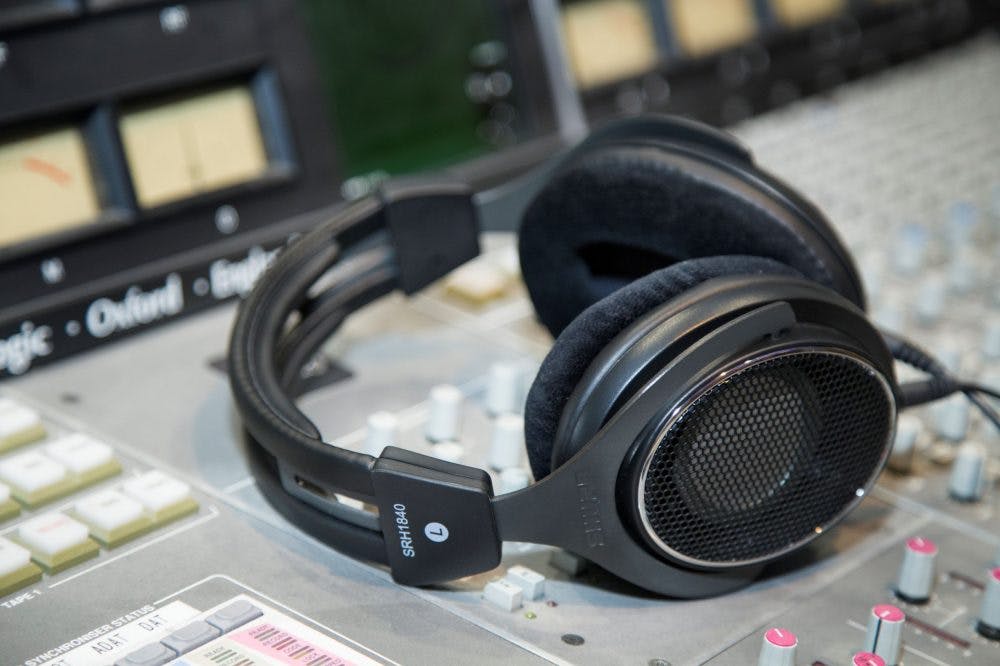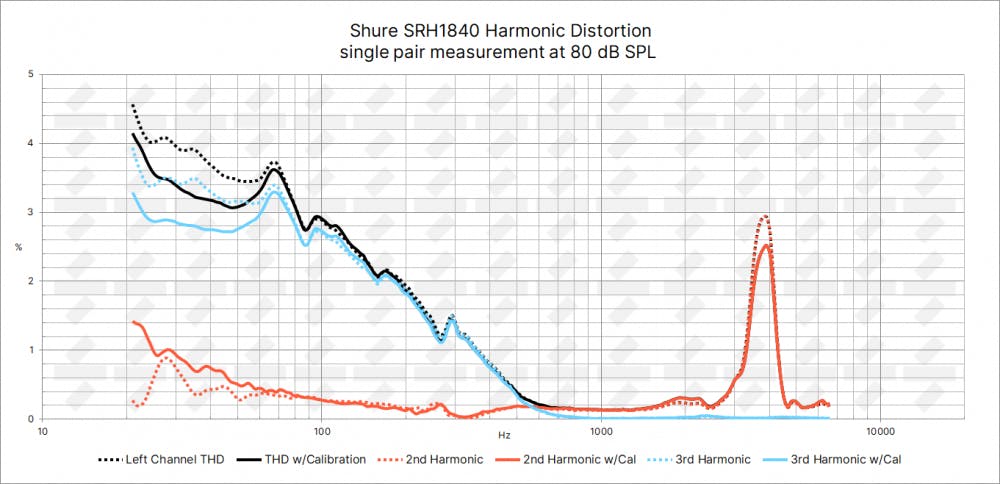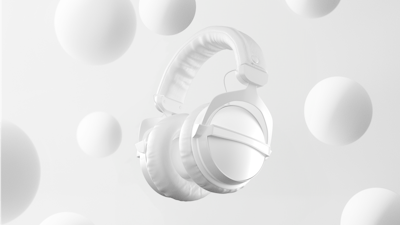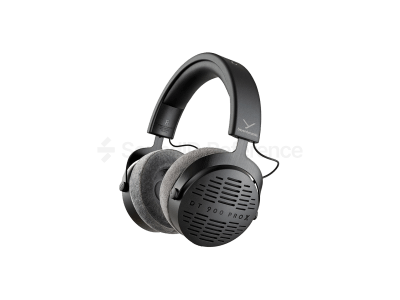Shure is among our favorite headphone brands with many great sounding models in their catalog. In most cases, they beat the competition when it comes to neutral frequency response out of the box. Is the SRH1840, the flagship headphones for Shure, the best model they’ve released?
- Relatively neutral frequency response
- Good comfort
- High quality lightweight build
- Comes with spare ear pads, cable and a case
Pros list with SoundID Reference calibration
- Completely neutral frequency response
- Shockingly high distortion
SRH1840 have low impedance for a flagship open-back set, yet the sensitivity is also rather low, so while they’re easier to drive from mobile devices than, say Sennheiser HD 650, only with a dedicated audio interface or headphone amp you can be sure that sufficient volume will not be a problem.
The build of SRH1840 is flagship-worthy. These lightweight headphones seem to be well put together and the materials feel premium, matching the price tag.
The additional accessory package that comes bundled with every SRH1840 includes a semi-hard case, additional cable, and a set of additional ear pads. Unlike others, Shure opts to include a spare set of the same velour ear pads that come installed with the headphones, so the frequency range will stay the same after the swap.
If we were to hand out an award to a headphone manufacturer for the out-of-the-box most neutral-sounding headphone catalog, Shure would easily win it! Most of their studio-oriented over-ear models beat the competition in most of the price brackets and SRH1840, as a true flagship, is the flattest of all Shure offerings. Only the 8-10kHz boost separates them from the flattest headphones ever – Sennheiser HD 650. Range from 100Hz all up to 7kHz is exceptionally flat and requires only minor tweaks for calibration to get it perfect. More impactful correction is needed to tame the 6dB high frequency boost and improve the very top-end extension, but that most likely will be perceived only by younger listeners. The extension must be improved in the low frequencies as well, but unfortunately, there’s a massive issue with that. More on that later.
On average, the driver matching is ok, but we have measured pairs with the lower frequencies skewed to one side and other more narrow frequency band issues in the upper frequencies. These issues aren’t ruining the whole experience and will go unnoticed in most cases, but still, at this price point, we’d expect better.
SRH1840s are lightweight and distribute pressure on the head quite evenly. The relatively relaxed clamping force aids long session comfort, yet is just strong enough to prevent them from sliding around on the listener’s head. The headband padding is very minimal though, so it might become a problem after a longer period for some. Nevertheless, all of our testers praised SRH1840’s comfort.
If SRH1840’s harmonic distortion was on par with its rivals (or any modern pro market headphones) the asked price would be appropriate. But the awful THD doesn’t match the price tag, hence the value for your money is poor.
SRH1840 THD graph is unlike any modern pro headphones we’ve measured. It’s common to have some distortion in the sub bass, which in many cases can go unnoticed in real word use, however in this case the distortion creeps up in the low mid-range, surpassing even 300Hz. The massive 3rd harmonic distortion not only prominently shows up in measurement graphs but also results in very intrusive artefacts and coloring stretching from sub bass to low mids.
Unfortunately, this ruins these otherwise near-perfect headphones and makes them painfully incompetent for any critical listening work.
For reference, you can compare this graph to that of AKG K612 Pro, a relatively affordable open-back studio headphone model. 3rd harmonic distortion usually is the one that leads to very audible coloring and artefacts.
How accurate and consistent is the correction effect among different listeners?The bass may be perceived differently among listeners. That may be due to the fact that ear cups don’t swivel so ear pads push against the listener’s head at a set angle which will not provide the best seal for everybody.
How much do they differ pair to pair in terms of frequency response?Shure scores quite highly here, as we haven’t seen significant inconsistencies.
Rating
Conclusion
SRH1840 are very well put together open-back headphones, their build is high quality and frequency response not far from the flattest model out there. All this is sweetened with spare consumable parts – ear pads and cable and a great storage/travel case. SRH1840 does many things right, but unfortunately, all the good stuff is shadowed by the massive 3rd harmonic distortion, which makes them unfit for any critical listening as the distortion creeps even in low mids. Most people don’t find odd harmonic distortion to sound pleasant, in case you know you do, you can consider them for recreational listening.
You can order individual calibration for your Shure headphones from our store here.
Continue to discover our top recommended PRO studio headphones in our Top 24 list.
Final Rating
Calibration Enabled
Calibration
